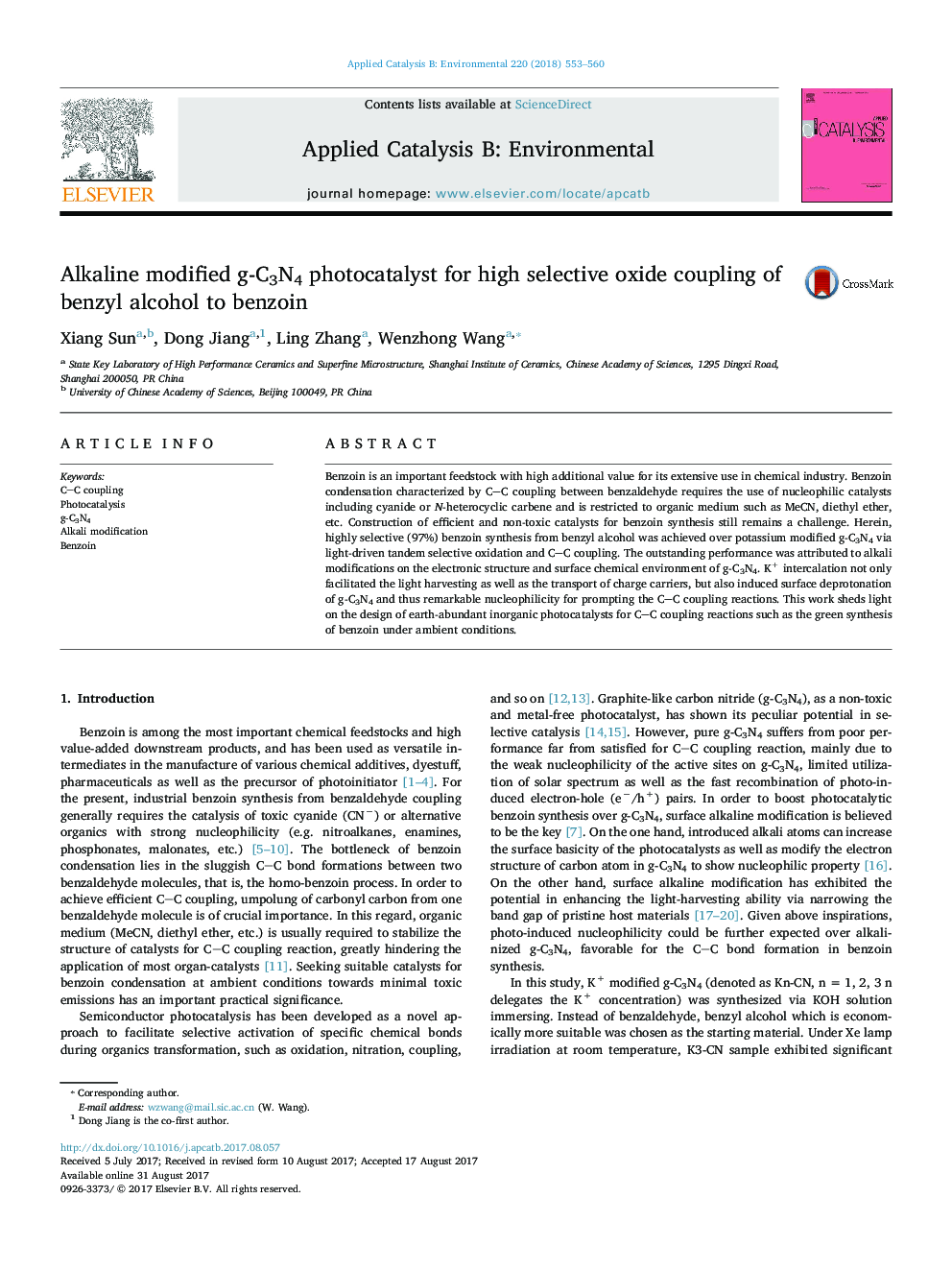| Article ID | Journal | Published Year | Pages | File Type |
|---|---|---|---|---|
| 6453661 | Applied Catalysis B: Environmental | 2018 | 8 Pages |
â¢K+ modified g-C3N4 achieved high selectivity (â¼97%) and conversion (â¼90.2%).â¢Reaction was conducted in the aqueous condition (pH = 7) instead of organic medium.â¢Light-driven nucleophilicity of g-C3N4 was enhanced after alkalization.â¢K+ modification facilitated carriers' separation and oxidation process of benzyl alcohol.
Benzoin is an important feedstock with high additional value for its extensive use in chemical industry. Benzoin condensation characterized by CC coupling between benzaldehyde requires the use of nucleophilic catalysts including cyanide or N-heterocyclic carbene and is restricted to organic medium such as MeCN, diethyl ether, etc. Construction of efficient and non-toxic catalysts for benzoin synthesis still remains a challenge. Herein, highly selective (97%) benzoin synthesis from benzyl alcohol was achieved over potassium modified g-C3N4 via light-driven tandem selective oxidation and CC coupling. The outstanding performance was attributed to alkali modifications on the electronic structure and surface chemical environment of g-C3N4. K+ intercalation not only facilitated the light harvesting as well as the transport of charge carriers, but also induced surface deprotonation of g-C3N4 and thus remarkable nucleophilicity for prompting the CC coupling reactions. This work sheds light on the design of earth-abundant inorganic photocatalysts for CC coupling reactions such as the green synthesis of benzoin under ambient conditions.
Graphical abstractDownload high-res image (179KB)Download full-size image
